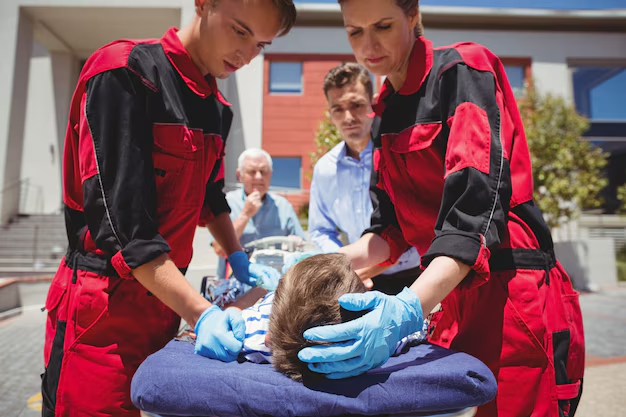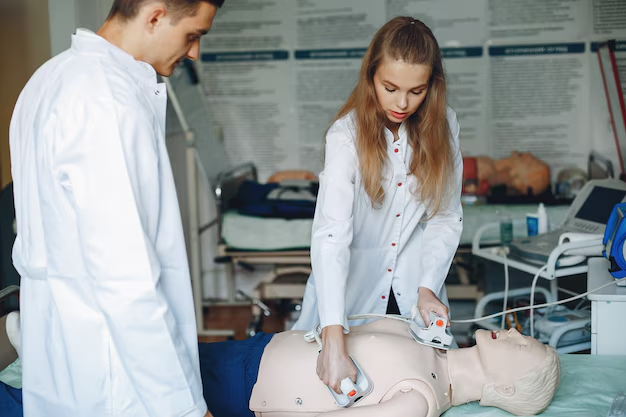Emergencies come unannounced, and being unprepared can escalate a critical situation. Emergency medical preparedness is not just for healthcare professionals but for everyone. Knowing basic medical skills can save lives, prevent complications, and make a difference in unexpected situations. Here, we discuss essential skills that everyone should learn to handle medical emergencies effectively.
Importance of Emergency Medical Preparedness
Being prepared for medical emergencies ensures quick and effective response, which can be a determining factor in life-threatening situations. Immediate actions such as administering CPR or stopping severe bleeding can save precious time until professional help arrives. Moreover, preparedness reduces panic, enabling individuals to act with clarity and confidence during emergencies.
Essential Skills Everyone Should Learn

1. Cardiopulmonary Resuscitation (CPR)
One of the most vital skills is CPR, which can revive someone experiencing cardiac arrest. Learning the proper techniques of chest compressions and rescue breaths can sustain blood circulation and oxygen flow until medical professionals intervene.
2. Using an Automated External Defibrillator (AED)
An AED is a portable device used to deliver an electric shock to a person’s heart to restore a normal rhythm. Familiarity with AED operation can significantly increase survival chances in cardiac emergencies.
3. Managing Choking Incidents
Choking is a common emergency that can turn fatal if not addressed promptly. Techniques like the Heimlich maneuver or back blows are simple yet lifesaving methods everyone should know.
4. Controlling Bleeding
Severe bleeding can lead to shock or death if not managed promptly. Understanding how to apply pressure, use a tourniquet, or dress a wound can prevent excessive blood loss.
5. Recognizing Stroke and Heart Attack Symptoms
Time is critical during a stroke or heart attack. Learning to recognize symptoms like chest pain, numbness, slurred speech, or facial drooping can prompt faster medical intervention.
6. Basic First Aid
Knowing how to clean and dress wounds, manage burns, or stabilize fractures ensures immediate relief and reduces the risk of complications.
7. Administering EpiPen for Allergic Reactions
Anaphylaxis, a severe allergic reaction, can be fatal without timely intervention. Being trained to use an EpiPen can prevent serious outcomes.
8. Handling Hypothermia and Heatstroke
Understanding how to regulate body temperature during extreme weather conditions can protect someone from hypothermia or heatstroke.
9. Maintaining a First Aid Kit
A well-stocked first aid kit is essential in every home, vehicle, and workplace. Familiarity with its contents and usage is crucial during emergencies.
10. Calling for Help Effectively
Communicating critical information to emergency services efficiently can save time and ensure the right help arrives promptly. Learning to describe the situation and provide accurate location details is key.
How to Learn These Skills
Various organizations offer courses in first aid and emergency medical response. The Red Cross, St. John Ambulance, and local health departments often provide accessible training. Online resources and community workshops are also excellent options for gaining knowledge and practicing skills.
Conclusion
Emergency medical preparedness is an invaluable asset that empowers individuals to act decisively and save lives. The skills mentioned above are easy to learn and can make a profound difference in critical situations. By investing a little time in training, you not only protect yourself but also contribute to a safer community. Remember, preparedness is not just a precaution; it’s a responsibility.
FAQs
Q. Why is learning CPR important? CPR helps maintain circulation and oxygenation in cardiac arrest victims, significantly improving survival rates.
Q. What should be included in a first aid kit? A first aid kit should include bandages, antiseptics, pain relievers, scissors, gloves, and a CPR mask.
Q. How can I recognize a stroke? Look for symptoms like slurred speech, drooping face, and sudden weakness or numbness on one side of the body.
Q. Where can I learn emergency medical skills? You can enroll in courses offered by organizations like the Red Cross, community centers, or online platforms.
Q. What is the role of an AED? An AED analyzes the heart’s rhythm and delivers an electric shock if necessary to restore a normal rhythm.

